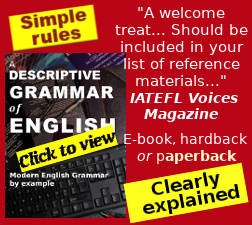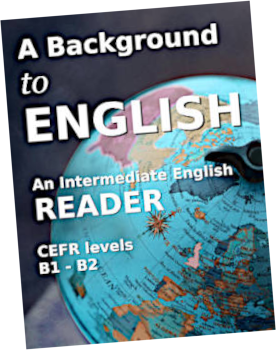The tests, their formats, and how to prepare for them
An ability to read and understand a text is a key to literacy, and by developing their reading skills, learners will also progress in the other skills of listening, writing and speaking.
Reading practice tests on Linguapress.
Among the hundreds of reading texts available for free on Linguapress.com, and in addition to the learning / teaching and language development exercises that accompany all texts, a growing selection of texts are accompanied by IELTS-style reading tests.These cover a range of topics from history to the environment.
► More sample IELTS-style reading comprehension texts, with new texts, are available in the paperback Proficiency-level Reading published by Linguapress, 2025.
Important note. The IELTS reading practice texts on Linguapress are more than just test practices. They are for teaching and learning, not just for testing. Almost all texts on Linguapress.com are culturally relevant, insofar as they are there not just to help students improve their reading skills, but also to help them learn something, indeed quite a lot, about the cutural background to English. As many have observed, languages are the expression of the culture and mentaties of the people who have shaped them, and understanding the background culture behind any language is a vital part of understanding the language.
This is particularly true for students preparing for IELTS or TOEFL, especially those who are going to need English for study or professional purposes.
Advanced level texts on Linguapress are frequently longer than the texts used in IELTS reading tests, and the IELTS-style tests that accompany articles come with more questions.
Reading is a key element in IELTS certification, as it is for TOEFL. Both certifications test the four language skills of literacy, namely reading and listening, writing and speaking, and each skill carries an equal weighting in the different tests. However when it comes to preparing for IELTS, TOEFL or other language certifications, students are advised to spend more time on developing their reading skills, than on directly developing the other skills. Developing a learner's proficiency in the active skills of writing and speaking is best achieved by exposure to new models, new vocabulary and new language features, and this comes from developing the learner's passive skills of reading and listening. Of the two, reading is the more demanding, the more likely to develop the learner's passive skills in an enduring way.
For all students beyond beginner level – and arguably for beginners too in the case of a second or foreign language – reading is by far the most valuable of the four key language skills. Learners who have difficulty reading will also have difficulty with writing and listening. Reading introduces learners to new vocabulary, new structures, and new language devices, doing so naturally, showing language as it is used in context. It broadens a learner's knowledge of a language, boosting their ability to speak, write and listen with more competence, greater confidence, and more understanding. Teaching learners the techniques that will help them score better on a reading test is only of limited value, unless learners are at the same time being encouraged or taught to develop their reading skills.
Reading and the tests
IELTS tests come in two forms, called Academic and General. There is actually not a great deal of difference between the two forms, and as far as reading is concerned, the main difference lies in the choice of texts. Most of the exercise types, though not all, are common to both forms of IELTS test. This is notably the case with those used in the reading tests on this website.
The IELTS reading test takes an hour, during which students have to answer a total of forty questions based on three different texts - i.e. an average of about 14 questions to answer in 20 minutes on each text.
The TOEFL iBT reading test is shorter, with two passages to read in about 35 minutes, and ten questions on each text.
E-book, hardback, paperback
The user-friendly reference grammar recommended by English teaching magazines worldwide
IATEFL Voices, EFL Magazine, Open! magazine, English Australia... and more

However, apart from the time
allowed and the number of texts, the two reading tests are similar; and
more importantly,
so is the job of preparing for them. There are no specific
reading skills to be mastered for any particular test; there are just
reading skills - skills that allow a person to read and understand
written English in the same way as they understand spoken English. In
particular these include understanding the general gist of what is
written, without immediately understanding all the detail, just as we
understand spoken or audio texts without having to understand every
single word. And as with so many activities, practice makes progress.
Each IELTS-style reading test on Linguapress.com comprises
about 20 questions, which is deliberately more than the number
used per text in IELTS test papers. As in IELTS test papers,
questions are grouped by category or question type, and cover the
categories commonly used for testing purposes in IELTS papers. These
include, among others:
Match headings - students have to find the paragraphs that correspond to a number of possible sub-headings.
MCQ True / False / not given - students must choose whether a particular bit of information agrees with what is said in the text, or not, or whether the text does not actually give any relevant information.
Complete the sentence: - students have to add as few words as possible, maybe just one or two words, to complete a sentence that reflects what was said in the text.
Missing words: students have to put back missing words into a summary of the text.
Match information: students have to match two bits of information given in the text, for example an event and a date, or an idea and a person.
How hard are the questions?
Answer: it varies a lot. Some
of the questions are very easy indeed.
For example students may just be asked to provide a date, or a
person's name, answers that can be very easily found in the text.
Other questions, such as some of the multiple choice questions, may
require a lot more thought, and a clear understanding of detail.
This is deliberate. The purpose of IELTS and TOEFL reading tests is to provide students with a grade attesting their level in English, not to teach them English. The mix of easy and harder questions means that candidates get very varying scores on the test. It is the score that will open up different educational or professional pathways. UK universities, for instance, generally require an IELTS test score of between 6 and 7.5.
On the reading test, this means that students should aim to get at least two thirds of the answers right, i.e. a minimum score of 26 / 40... with at least 30 / 40 if applying to courses in the most prestigious universities, or courses with very competitive entry requirements.
The time factor
Time is a critical
factor in IELTS tests. The aim of the test being
to gauge students' proficiency in English, time is limited. For the
reading test, students have to answer 40 questions on three texts, in
the space of one hour. This involves being able to read quite
quickly, and also to scan a text for its main ideas, before going
into the detail. The faster a student can read and scan a text, the
more time is available for the detailed study; a student who reads
slowly or with difficulty may thus be able to answer all the more
general questions, but
have less time left to check through the detail.... leading to a
lower score.
However, while time is strictly limited for testing purposes, it does not need to be limited for practice purposes, particularly for students starting to prepare for IELTS. The process of preparation for any test involves getting familiar with the format, knowing what to look for, and knowing how to express it. Students are thus encouraged to start preparing for their test by allowing themselves all the time they need to work on each test paper on this website or elsewhere, and only later, as the test date gets nearer, to limit themselves in time to half an hour, and eventually just 20 - 25 minutes for any one text... which is slightly more than under exam conditions.
Reading and other skills
More generally preparing for the reading
test of any certification involves developing one's familiarity with
the language and how it is used, reading for reading's sake, reading
far beyond practice reading texts and old test papers, and reading to
develop one's vocabulary across a wide spectrum of topics. Check out
the wide variety of advanced
level reading texts on Linguapress, texts that are not
accompanied by reading tests, but by exercises and activities to
develop a student's vocabulary, grammar and reading skills, not just to
test them..
While IELTS, TOEFL and other certifications test the four essential skills of literacy, not just reading skills, it is a student's ability to read English that will ultimately condition their ability to perform successfully in most academic or work environments.
 Copyright
LInguapress.com. If
you want to share this article with others, you are welcome to link to
it on social media, from
your blog, website
or school website, but do not copy it. A clickable link is quite
sufficient for sharing with others.
Copyright
LInguapress.com. If
you want to share this article with others, you are welcome to link to
it on social media, from
your blog, website
or school website, but do not copy it. A clickable link is quite
sufficient for sharing with others.Contact: Use the form on our get in touch page


